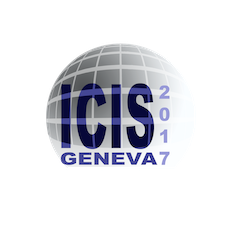Speakers
Description
The installation of molybdenum liners in the ion source NIO1 (Negative Ion Optimization phase 1) has proven to be successful in order to largely decrease the contamination of rf window by wall sputtering; intense hydrogen plasma are thus achievable even at moderate rf power (1200 W) in a continuous regime operation (much longer than one hour), which enabled prolongated campaign at several plasma conditions; operation down to 0.5 Pa is possible, while best beam conditions were observed among 1 and 2 Pa, which is satisfying considering that NIO1 was never cesiated up to now. This has motivated a delay in the installation of the existing Cs oven, to investigate the following items: best combination of plasma grid (PG) and bias plate (BP) voltages (usually separately controllable in NIO1) in order to reduce the coextracted electrode current $I_e$; effect of magnetic filter; improved extraction grid EG with ion deflection compensation; correlation of EG magnetic field and discharges in the extraction gap: achieved acceleration voltage for H$^-$ is indeed 12 kV up to now, at the relatively high pressure there (>0.2 Pa) due to the limited pumping installed.
Database of results with H is compared to previous results with Oxygen (and Oxygen/Argon mixtures), where a much larger coextracted electron current $I_e$ was measured as expected, and ion beam current was thus limited below 3 mA. On the contrary for H, the limited rf power used resulted in a low extracted current (6 mA), consistently with the stated limitation in voltage.
Maintenance experience, concerning gasket erosion and ceramic surface alteration is discussed; the thin insulators among BP and PG and other walls show plasma related embrittlement, and are being rebuilt in a more compact BN grade.
Performance of some installed beam diagnostic (side view luminosity, Doppler-shifted emission, and carbon plate calorimetry) is critically reviewed, especially for effectiveness of beam imaging, as also compared to other beam diagnostics. As to the former method, in vertical side view projection, three columns of beamlets clearly show, while the horizontal projection is somewhat blurred by ion deflection up to now. Finally steady progress of acquisition software is noted. Related advancement of simulation tools is summarized.
